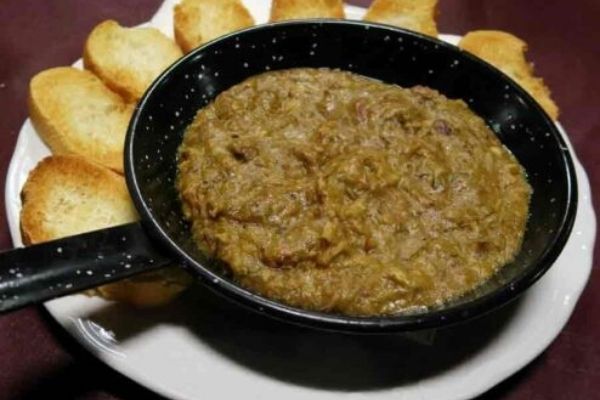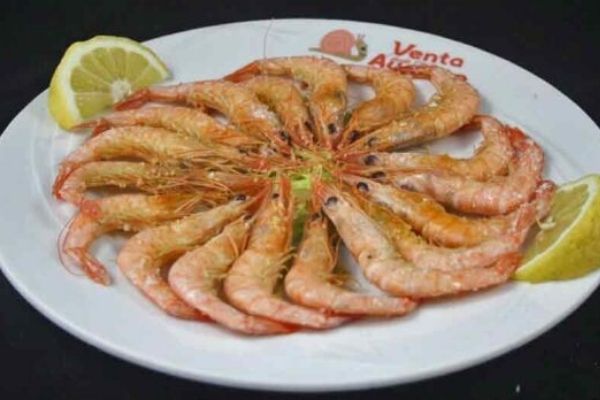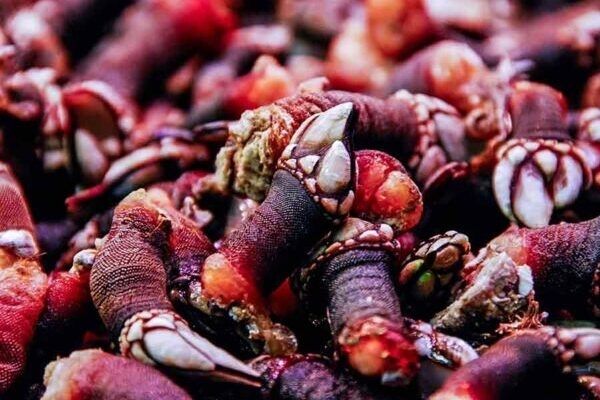Traditional Spanish Tapas is one of the most popular dishes of the Spanish gastronomy.
Tortilla española, chorizo, jamón, Spanish croquettes… are some of the most famous tapas. However, are they the only ones? Or… Are they the most delicious ones?? Don’t miss these five Spanish tapas dishes that are regional specialties. A secret that only a native Spanish can tell you!
There are several versions about the origin of the tapas and all of them date back to the Middle Ages. One of the most widespread versions tells that King Alfonso X, a 13th-century Spanish monarch, fell ill and during his convalescence, he took small portions of food to alleviate the intoxication effects of wine.
Once the monarch recovered, he established this measure in all the taverns of the kingdom, to ‘cover’ – ‘tapar‘ – the effects of alcoholic beverages such as wine or beer.
Another quite widespread version also tells about the reign of the Catholic Kings (Isabella and Fedinand) In the 15th century, to avoid the numerous accidents at the exits of the taverns caused by the excess consumption of wine and beer, the innkeepers were forced to serve a portion of cold food with drinks.
The innkeepers prepared a slice of cheese or ham in a small plate that they placed on top of the wine or beer jug, covering it – ‘tapándola‘.
With this, they protected the drink from dust and flies and also forced the locals to eat the ration of food before drinking alcohol.
Today the tapa is a fundamental element, not only of Spanish gastronomy, but also of our culture. According to the Spanish Language Dictionary, ‘a tapa is a small portion of some food that is served as an accompaniment to a drink.’
The variety of tapas in Spain is immense. In some areas in the north of the country, tapas are called pinchos (pintxo in Basque).
Having a drink (alcoholic or not) accompanied by a tapa is a habit so ingrained in Spaniards that it even has its own vocabulary. To describe the activity, we use the verb ‘tapear‘ and the noun ‘el tapeo‘. For Spanish people, ‘tapear‘ or ‘ir de tapas‘ is about having a drink and a tapa in a bar and when we finish, we go to a new bar to have another drink and another tapa. On weekends it is quite common to go out for lunch or dinner ‘a base de tapeo’.

The first three traditional Spanish tapas are from central regions of Spain such as Castille and Madrid. These tapas recipes are based on ingredients that are common in these areas of Spain: game meat, pork, garlic…
1. Traditional tapa from La Mancha: El ajoarriero manchego or atascaburras
We are going to travel to La Mancha, the land of Don Quixote. Specifically, we are going to visit the province of Albacete. One of the most popular tapas in this area is the ajoarriero or atascaburras.
We owe the origin of this tapa to the shepherds, who in ancient times, spent long periods in the field, used basic products such as potatoes, olive oil, garlic and salted cod to make nutritious and energetic food.
The result is a white paste, which, like morteruelo, is eaten (hot or cold) with bread.
There are people who do not like the garlic flavor of this tapa but… I love it!
2. The UNESCO tapa: Los torreznos
Now, I would like to talk about my friend Rory’s favorite Spanish tapa: torreznos. Or as he calls it “fried pork skin”. And in reality, torreznos are just that, the fried pork rind.
Torreznos are typical of the two Castillas (Castilla La Mancha and Castilla León). But Soria is the province in which they are most popular.
This is a Spanish traditional tapa that is as simple as it is delicious. Its preparation consists of frying strips of bacon or pork belly in a pan with olive oil.
If you come to Spain, you cannot miss this tapa, which has been declared a gastronomic heritage of humanity by UNESCO.
Rory could eat a whole plate of torreznos in a minute!

3. Popular tapa dish from Cuenca (my city!): El morteruelo
How could it be anywhere else? I’m going to continue with the most famous tapa in my province, Cuenca. It’s morteruelo.
Morteruelo is one of the oldest tapas in Spain. Its origins date back to the 11th century and it is made from meat, especially game meat. Its main ingredients are hare, rabbit, partridge, pork liver, pork loin, spices and breadcrumbs. It is cooked in a mortar until it becomes a paste. It is then eaten while it’s still hot with bread. Delicious!
The next two traditional Spanish tapas are from coastal areas: Andalusia and Galicia. These tapas recipes are based on seafood, which is one of the main Spanish ingredients in our Mediterranean diet.
4. Exquisite tapa dish from Andalusia: Las gambas de Huelva
The last two Spanish traditional tapas in this article are dedicated to seafood lovers. To do this, we started traveling to Huelva, in Andalusia, to discover one of its treasures: the white prawn.
This exclusive product is only found on the coasts of the towns located at the mouths of the Guadiana River and the Guadalquivir River, in Huelva.
Its flavor is extraordinary (so is its price!) and it differs from the common prawn by its lighter color and its fine and long hairs next to the head.
The tapa is prepared simply by cooking the prawns and serving them with a little bit of coarse salt and lemon. A delicacy.
5. Traditional tapa dish from Galicia: Los percebes
From the south of Spain we travel north, to Galicia, the land of the Camino de Santiago, to finish with another seafood tapa: percebes.
This crustacean lives in the rocks of the cliffs and coasts of the estuaries of Galicia.
It is collected manually and it is a product of great importance in the local economy of these areas. In particular, a large number of women are dedicated to collecting barnacles. In Galicia, they are known by the name of ‘percebeiras‘.
Although I have never tried this tapa, my Dad loves it. The most usual is to cook the percebes in salted water and bay leaf for two minutes.


Your Spanish Hub is a dedicated platform for you to improve your Spanish with online Spanish classes. If you have enjoyed this article, you might like to check the Spanish Classes section on our website where you will find more information to learn Spanish with us.
I have to admit that it has not been easy to choose these five traditional Spanish tapas. The truth is that I could continue writing about many other delicious Spanish tapas, but I hope that you have discovered new things in this article and most importantly taken good notes. So when you visit Spain next time you can easily order in a bar ‘una caña y una tapa de…‘
